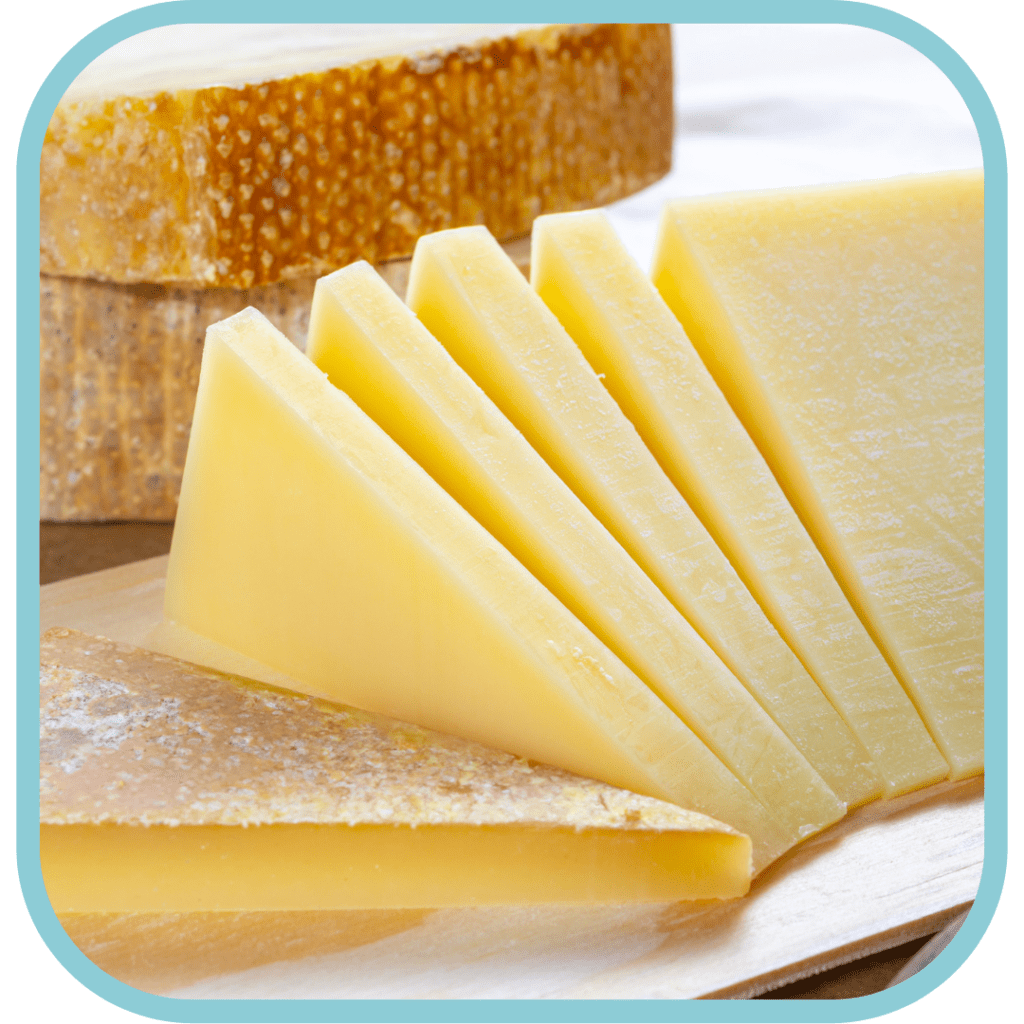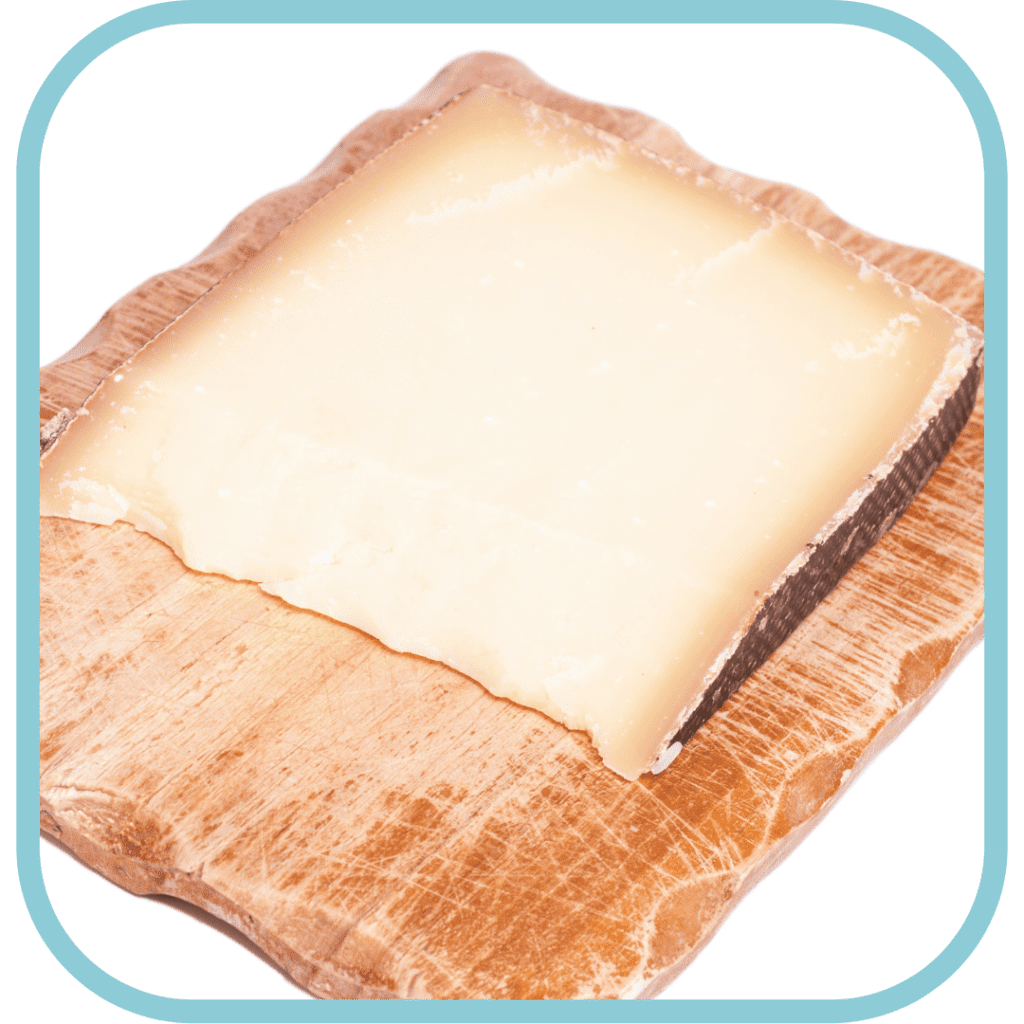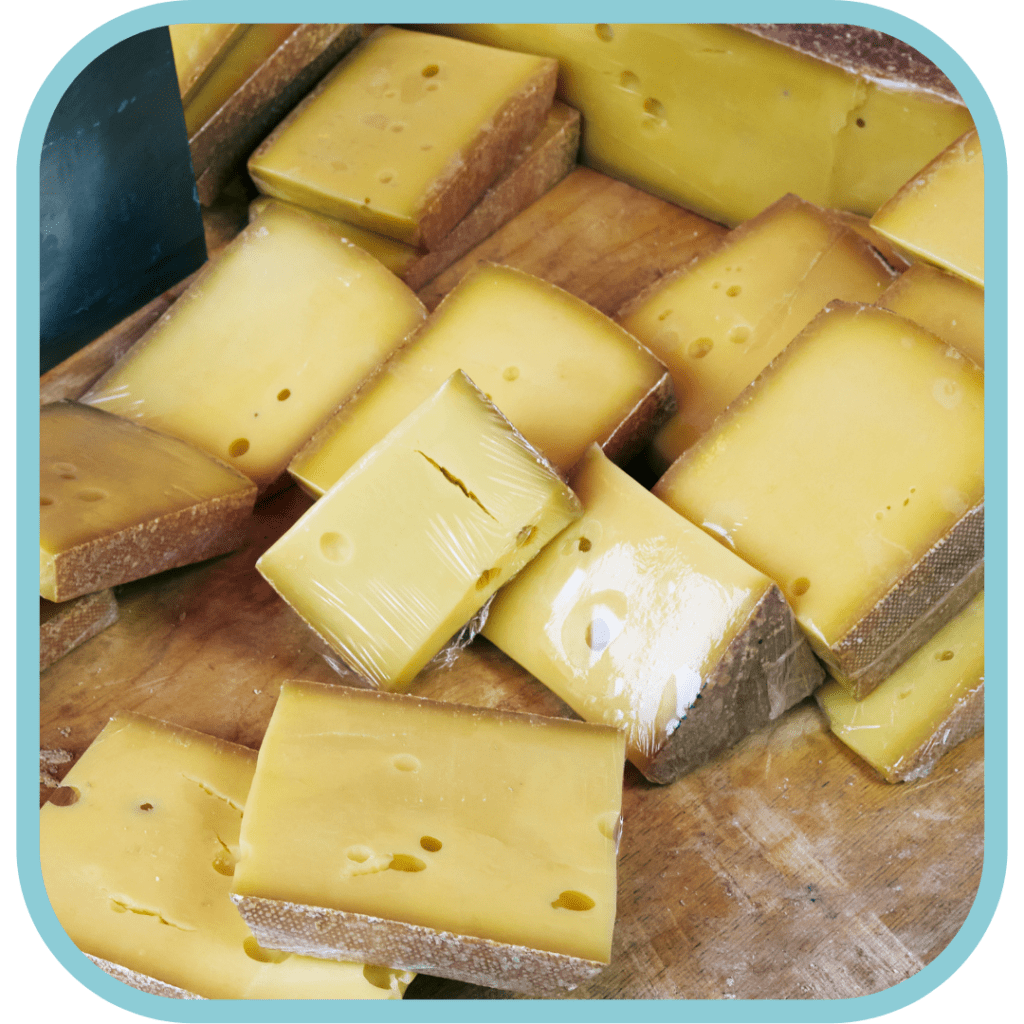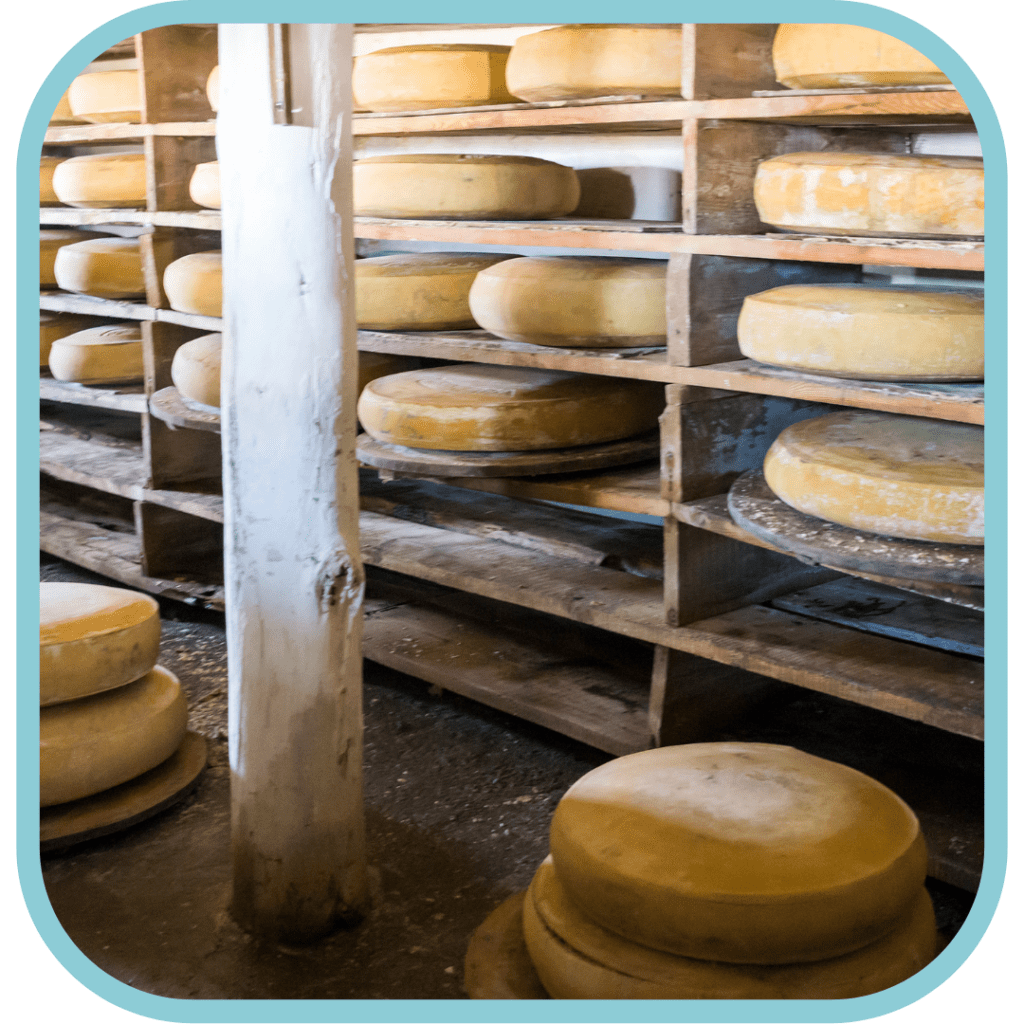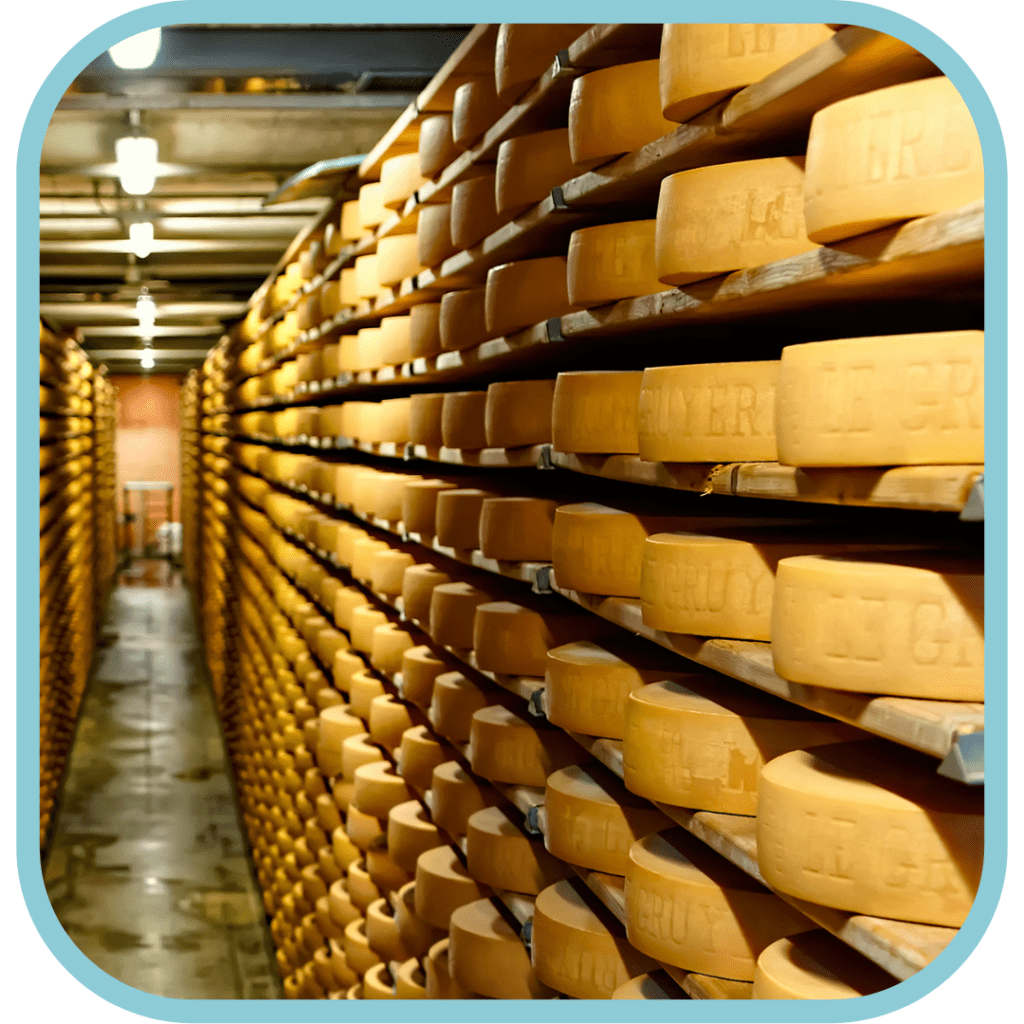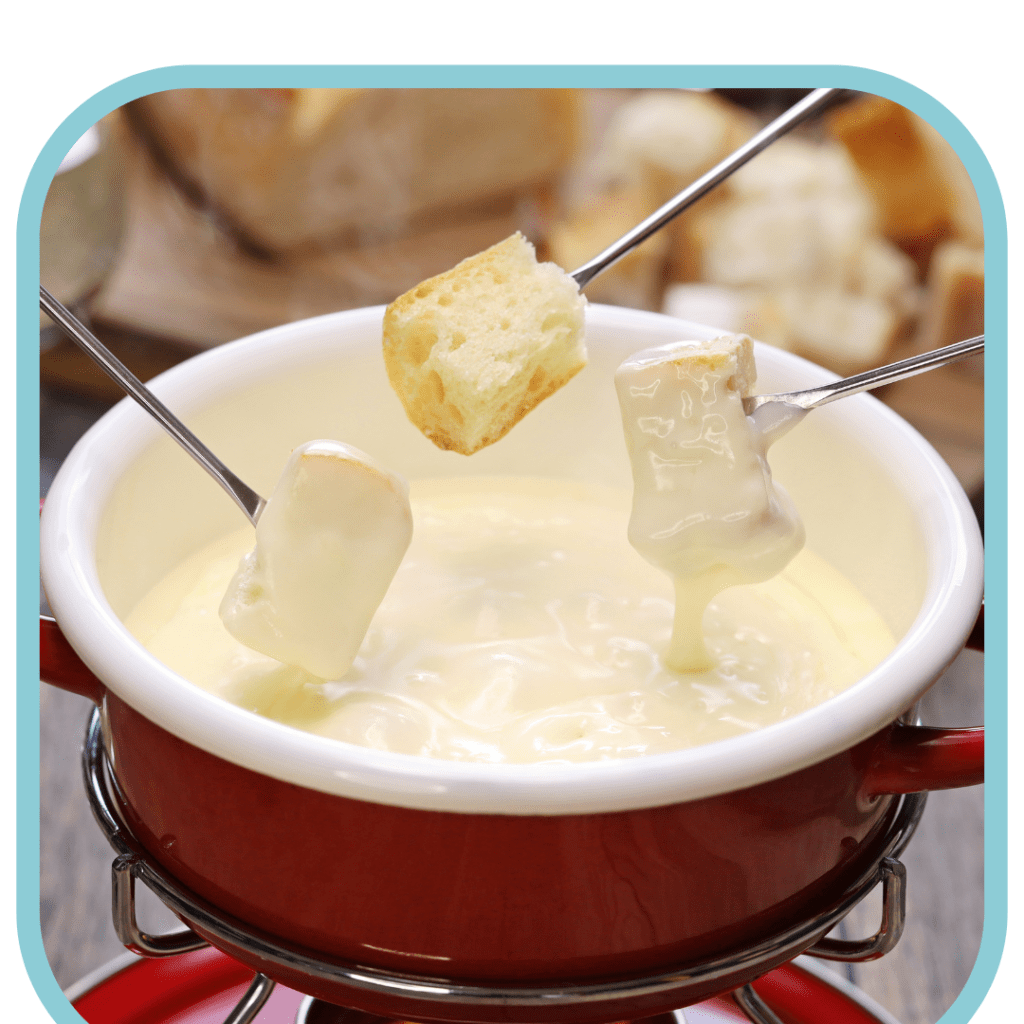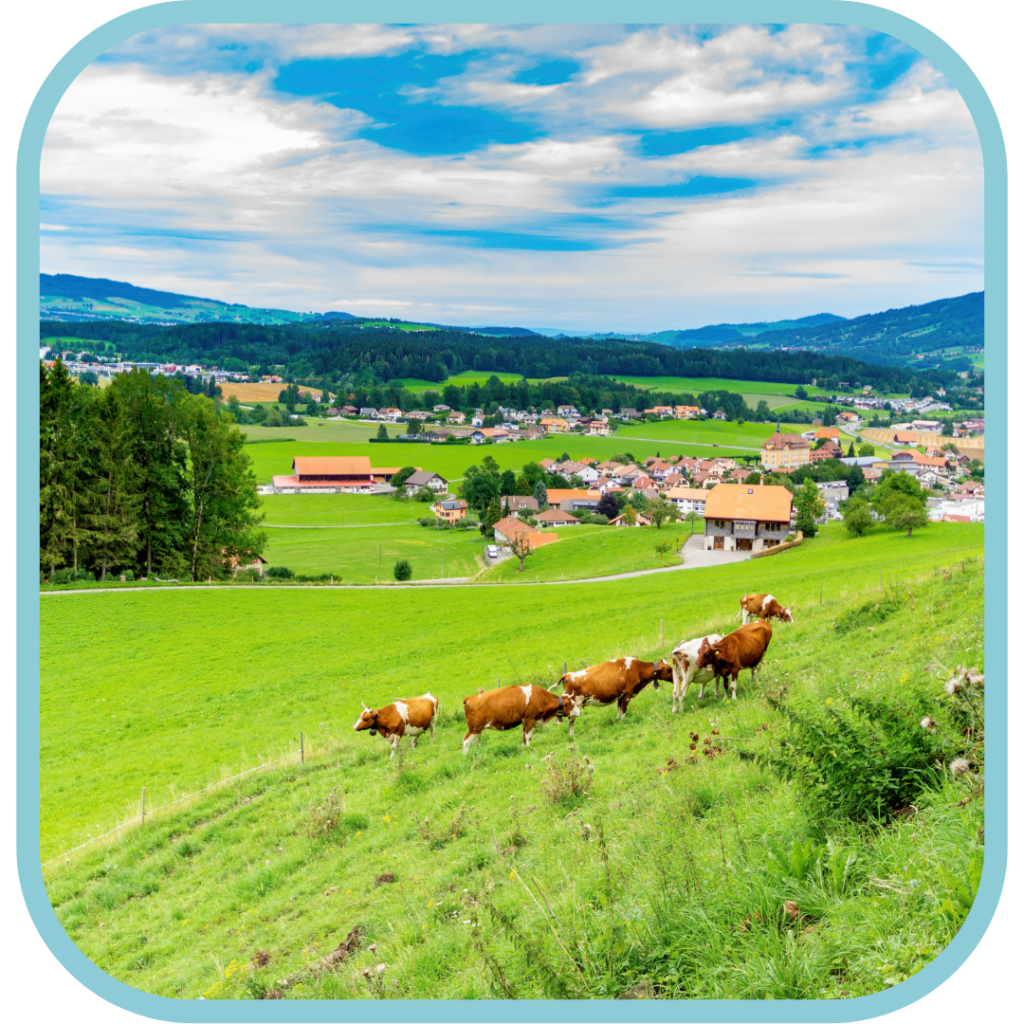What is Le Gruyere AOP
Le Gruyere is made in the Alps of western Switzerland adjacent to France. It is a big cheese for long keeping, protected by it’s AOP geographical indicator.
Taste Profile
| Taste Profile | Tastes | Dairy Flavours | Other Flavours |
| Taste & Flavour | Balanced moderate to high sweet, salt and umami Low acid Low bitter | Butter, cream, cooked milk | Floral, fruity, herbs, green grass |
| Mouthfeel | Smooth and firm. Chewing turns the curd into a smooth paste. |
| Description | Size and Shape: [Typically] 40kg, disc shaped with slightly curved edges. 10cm tall and 50-60cm in diameter. Rind: The rind is usually 0.5cm or so in thickness, brown to orange in colour on the surface, and showing a pattern of small white dots. The rind typically is not eaten but is edible. Paste: The paste will be smooth pale yellow across the cheese with no cracks, openings or fissures. A small number of holes or eyes are sometimes found. They should not be numerous like Emmental. |
The region of Gruyere can claim to be the home of excellent cheesemakers for over 1800 years old, although evidence becomes firmer in the 12th century. Today, despite being Swiss and outside the EU, Le Gruyere AOP is recognised by the European Union.
The cheese are made in 1 of over 200 dairies, often small and high in the Alps. The cheese are aged either by the cheesemaker or by one of 11 affineurs who consolidate production and prepare it for national and international sale.
Key cheesemaking techniques for Le Gruyere:
- high temperature scalding of the curd after it has been cut. This diverts the taste and flavour generating organic pathways to produce sweeter and more floral curd; and
- the European tradition of recombining the curds prior to draining in the VAT
Le Gruyere production is overseen by a consortia which enforces the AOP rules, and guides marketing nationally and internationally.
It’s balanced tastes make it extremely popular with consumers, and it’s capacity to age well developing interesting fruity floral complex notes makes it a strong performing at cheese awards. It melts easily, used in a wide variety of recipes.
The cheese is marketed at different grades representing different ages. There are also variants associated with where and when the cows graze and how the cheese is affineured.
Variations
The Le Gruyere Consortium markets the cheeses as one of Le Gruyere AOP (6-9 months), Le Gruyere Reserve AOP (more than 10 months), Le Gruyere Bio AOP (organic) and Le Gruyere Alpage AOP (summer pastuered cows. It is a smaller 25kg cheese, and a more traditional making technique).
Affineurs bring their own interpretations to the cheese, often aging them 18 months and more, and these are the cheese that typically achieve the national and international awards.
Le Gruyere AOP It is similar but distinct from Gruyère de Comté, better know as Comté AOP, and French Gruyere. Traditional and farmhouse cheeses similar to gruyere are found across Germany, Austria, France, Italy and Greece.
Some countries such as the USA do not recognise Gruyere as a PFN, and the term gruyere is applied to a number of Swiss styles cheeses in those territories.
Further learning
See the charlieturnbull.com’s Ultimate Guide to Le Gruyere AOP for more on cheddar.
For more information on the Le Gruyere consortia go to: www.gruyere.com


